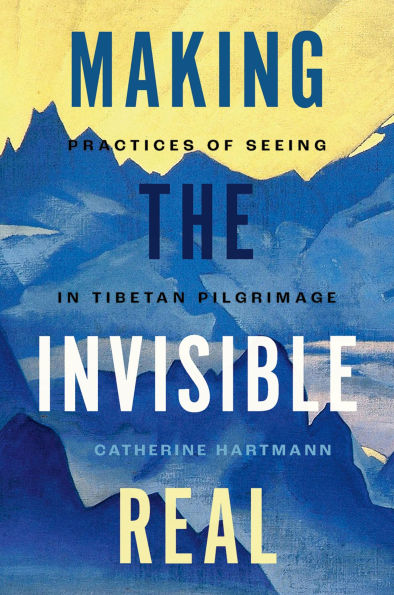How can a person learn to see a mountain as a divine mandala, especially when, to the ordinary eye, the mountain looks like a pile of rocks and snow? This is the challenge that the Tibetan pilgrimage tradition poses to pilgrims, who are told to overcome their ordinary perception to see the hidden reality of the holy mountain. Drawing on multiple genres of Tibetan literature from the 13th to 20th centuries--including foundational narratives of holy places, polemical debates about the value of pilgrimage, written guides to holy sites, advice texts, and personal diaries--this book investigates how the pilgrimage tradition tries to transform pilgrims' perception so that they might experience the wondrous sacred landscape as real and materially present. Catherine Anne Hartmann argues that the pilgrimage tradition does not simply assume that pilgrims experience this sacred landscape as real, but instead leads pilgrims to adopt deliberate practices of seeing: ways of looking at and interacting with the world that shape their experience of the holy mountain. Making the Invisible Real explores two ways of seeing: the pilgrim's ordinary perception of the world, and the fantastic vision believed to lie beyond this ordinary perception. As pilgrims move through the holy place, they move back and forth between these two ways of seeing, weaving the ordinary perceived world and extraordinary imagined world together into a single experience. Hartmann shows us how seemingly fantastical religious worldviews are not simply believed or taken for granted, but actively constructed and reconstructed for new generations of practitioners.
1146868522
Making the Invisible Real: Practices of Seeing in Tibetan Pilgrimage
How can a person learn to see a mountain as a divine mandala, especially when, to the ordinary eye, the mountain looks like a pile of rocks and snow? This is the challenge that the Tibetan pilgrimage tradition poses to pilgrims, who are told to overcome their ordinary perception to see the hidden reality of the holy mountain. Drawing on multiple genres of Tibetan literature from the 13th to 20th centuries--including foundational narratives of holy places, polemical debates about the value of pilgrimage, written guides to holy sites, advice texts, and personal diaries--this book investigates how the pilgrimage tradition tries to transform pilgrims' perception so that they might experience the wondrous sacred landscape as real and materially present. Catherine Anne Hartmann argues that the pilgrimage tradition does not simply assume that pilgrims experience this sacred landscape as real, but instead leads pilgrims to adopt deliberate practices of seeing: ways of looking at and interacting with the world that shape their experience of the holy mountain. Making the Invisible Real explores two ways of seeing: the pilgrim's ordinary perception of the world, and the fantastic vision believed to lie beyond this ordinary perception. As pilgrims move through the holy place, they move back and forth between these two ways of seeing, weaving the ordinary perceived world and extraordinary imagined world together into a single experience. Hartmann shows us how seemingly fantastical religious worldviews are not simply believed or taken for granted, but actively constructed and reconstructed for new generations of practitioners.
88.99
In Stock
5
1

Making the Invisible Real: Practices of Seeing in Tibetan Pilgrimage
224
Making the Invisible Real: Practices of Seeing in Tibetan Pilgrimage
224Related collections and offers
88.99
In Stock

Product Details
| ISBN-13: | 9780197791578 |
|---|---|
| Publisher: | Oxford University Press |
| Publication date: | 04/25/2025 |
| Sold by: | Barnes & Noble |
| Format: | eBook |
| Pages: | 224 |
| File size: | 2 MB |
About the Author
From the B&N Reads Blog
